Hello, today I will continue my tour of the costumes of The Netherlands with the Province of North Brabant. The Duchy of Brabant was established in 1183. When Belgium seceded from The Netherlands, it included the southern part of Brabant, which today form the Provinces of Antwerp and Brabant. Here is a map of the Dutch Provinces. North Brabant is in light green at the center bottom.
This province can be divided into three historical and cultural regions, Oost-Brabant, De Meijerij, and West-Brabant.
The central part of the province is often called by its historical name: Meierij van 's-Hertogenbosch, or Meierij van den bosch for short. Here is a map of the extent of this region.
The dark gray area to the right is Oost-Brabant, and to the left is West-Brabant, which is comprised of the old Barony of Breda and the Marquisate of Bergen op Zoom.
Brabant is remarkable for the large number of various kinds of caps and headgear which were worn, by some counts up to 200. I will cover a few of the more common ones.
De Meierij van 's-Hertogenbosch
The outfit which is often considered to be the most distinctive and characteristic of this central region is the 'Muts en Poffer'. This is a dress outfit, usually worn for church and other important occasions. The image at the head of the article shows this headgear. Here are a few more images.
This resembles the 'muts en toer' worn in the east, but there are several distinctions. In the east, the goffered front of the muts extends further out in the center, making it resemble the bill of a baseball cap. Here is and example of a muts from Limburg.
It is also worn a bit further back so that it does not stick out over the forehead, take a look at the images above.
Second, the poffer is flatter and wider than the toer, and sticks out to the sides in a way that the toer does not. It also often has trailing flowers in the back and is often covered with a veil of tulle, as we see here.
To put on the poffermuts, first the hair is put up and a black undercap is put on. This holds the hair in place, and provides greater contrast for the lace in the puffed back of the muts.
This cap, or a similar one made in white linen was also worn for everday in the house or for work.
Here is a demonstration of how to put on the poffermuts. After the undercap is in place is the time to put on jewelry.
After that, the muts is put on and secured.
Finally the poffer is put on top of the muts, and secured by an elastic band which wraps around the base of the rear puff of the muts.
Here are a couple more mutsen from this region.
And a look at some poffers. This first image shows the underside of a poffer. Some of the poffers are shown with muts, and some without.
Here are a couple of poffers which are labelled as mourning poffers.
For Heavy Mourning, that is, the period of time immediately following the death of an immediate family member, the poffer was not worn, but the falie was put on. This is a custom that was very widespread in Western Europe. This garment was also put on when a new mother came to be Churched after her 40 days of quarantine.
The Sunday / dress outfit had much in common with city fashion of the time, consisting of a black shirtwaist, skirt and apron. Shawls, jackets, coats and cloaks were worn as appropriate. There is one particularly unique chasuble-shaped shawl which was sometimes worn here.
A cross on a ribbon or chain, and a pocket watch chain were worn, often together, with earrings and other jewelry.
The poffer was NOT worn for everyday dress, although you will sometime see staged postcards and drawings which show this.
This second image, in fact, does not show a poffer, but a paske, also called strikkenpoffer. This was a similar ornament made of folded ribbons which is simpler and less expensive. It is worn with the second type of cap, the gazen muts. I still do not think that it would be worn to haul milk cans around.
The everyday cap was of several types. One was the gazen muts seen on the milkmaid and here, with its bulbous back and voluminous bottom frill made of opaque linen and worn by itself or with the strikkenpoffer for more dressy times. The bottom edge was ironed and starched to make it have a shape of its own. Usually the front was less goffered.
This last image shows two women wearing different kinds of caps, the gazen muts on the right and the dagse muts on the left. Here is another photo showing the muts en poffer, the dagse muts, and a more city fashion hat.
The dagse muts, small cap, or koveltje was worn when the occasion was not appropriate to the grandeur of the muts en poffer, or if a woman was not able to afford it. In many country districts this was not uncommon. Compare the dress skirt of the woman on the left with that on the right in this image above. It was made of opaque linen, with the addition of white ribbons, broderie anglaise and frills with much leeway in individual ornamentation.
In the district of Vlijmen the caps were particularly distinctive. Here they were called kapmuts.
Meisje muts.
Girls had their own cap, which they started wearing when they began school, until they reached adulthood. It resembled the dagse muts, except that it was black.
There does not seem to be any distinctive men's dress from this region.
And that is enough for today, I will continue with the West Brabant costume in my next article. Just a few more images to close.
Thank you for reading, I hope that you have found this to be interesting and informative.
Roman K.
email:rkozakand@aol.com






























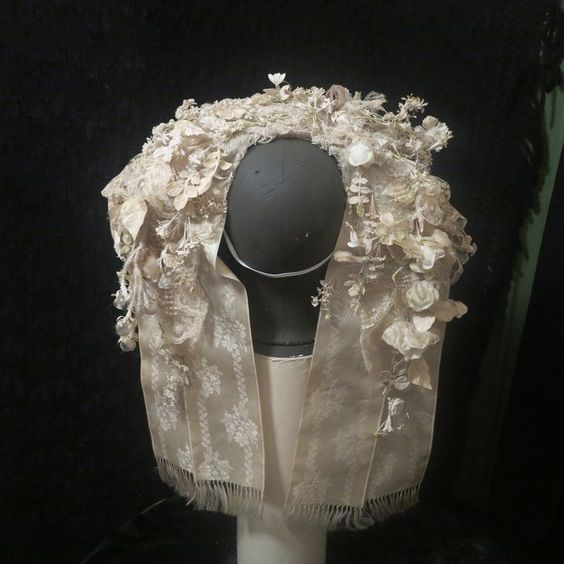

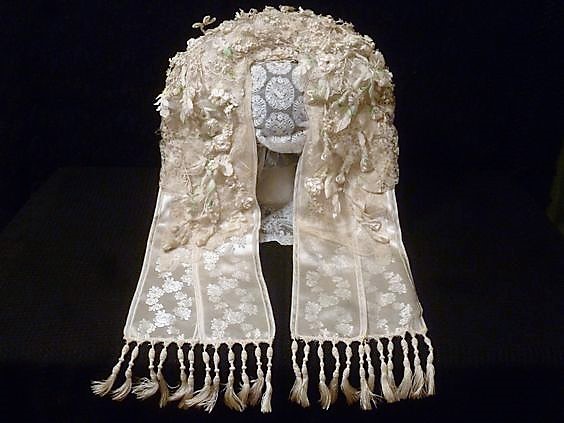








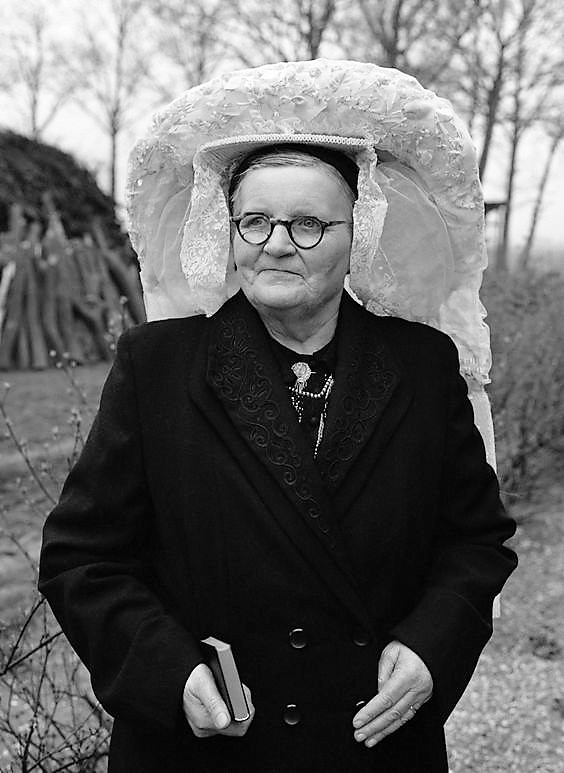








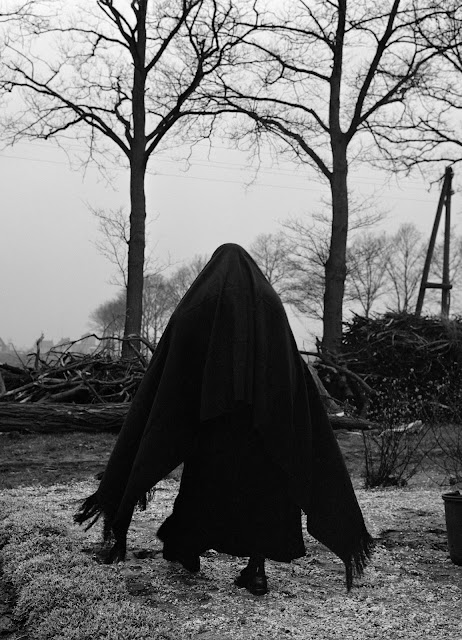

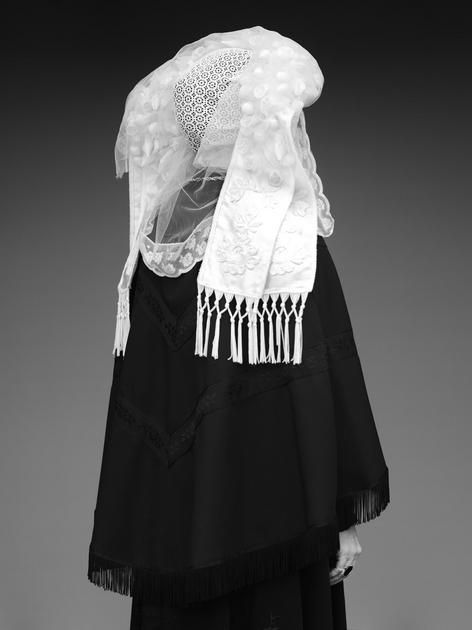















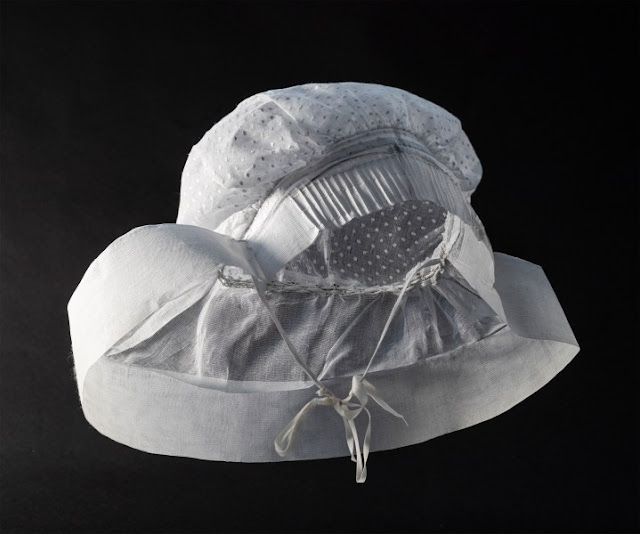






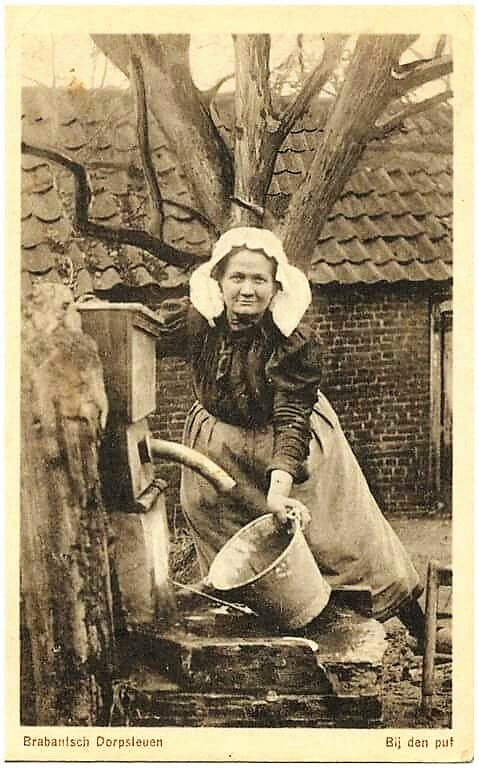





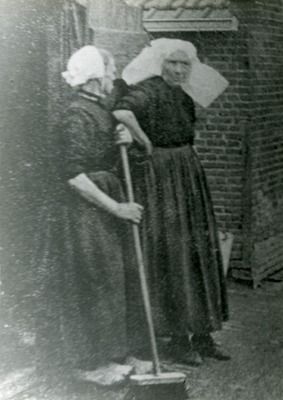




















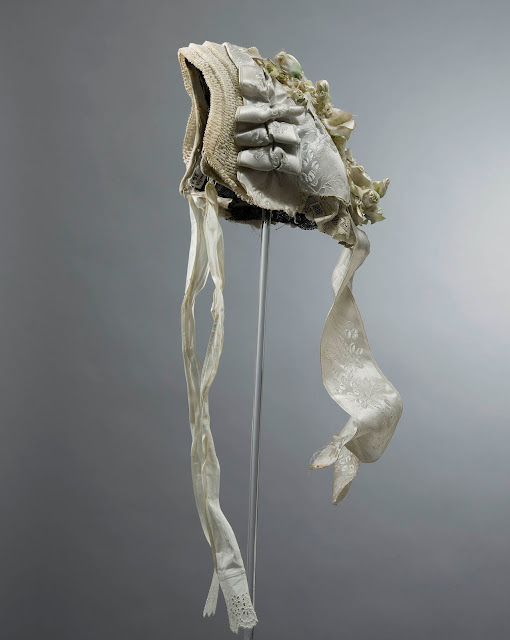






















































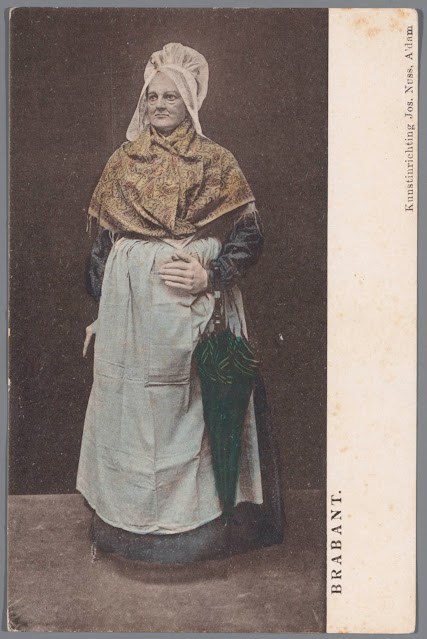
















No comments:
Post a Comment